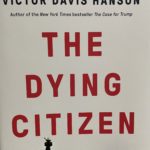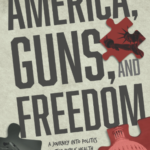Crack House to Coffeehouse
Luxurious spas, bed and breakfasts and coffeehouses are now sprouting up in the once poverty stricken, high crime neighborhoods of Harlem, New York. Formerly dilapidated buildings have been stripped down and renovated, transforming these neighborhoods into trendy, attractive places to live.
Derek S. Hyra, a community development expert in the U.S. Department of the Treasury, addresses this modern-day transition of predominantly black urban communities in his research, focusing upon two U.S. neighborhoods in New York and Chicago—Harlem and Bronzeville, respectively.
Troubled neighborhoods like Harlem, as Hyra explained during a panel discussion last week, have literally gone from the “crack house to the coffeehouse.”
Hyra participated in the recent panel session to speak about his newly released book, “The New Urban Renewal: The Economic Transformation of Harlem and Bronzeville” during the July 11 book launch at the Woodrow Wilson International Center for Scholars. The book addresses the so-called urban renaissance of these two widely recognized historically black neighborhoods, especially with regard to the social and economic impact of new inner-city developments.
As a resident of both cities, Hyra—a white man—witnessed the many social and economic problems suffered by area residents. Intrigued by the inundation of progressive change in the predominantly black communities of Harlem and Bronzeville, Hyra decided to obtain the research for his book by speaking with homeowners, public housing tenants and real estate developers in both cities.
Through his research, Hyra discovered that areas formerly overwhelmed with issues of crime, poverty, and illegal drug use had become home to several Starbucks coffee shops, as well as brand-new trendy apartment buildings and banks, making the communities ideal for black and white professionals alike.
In reference to his unique interest in the topic of urban development, Hyra posed the following question: “How did a white guy who grew up in New York City suburbs get interested in urban renewal?” To provide his listeners with a background of these interests, Hyra reflected upon his time spent in Harlem as a high school student, playing basketball frequently at the local YMCA during the 1980s. He explained how, when his basketball coach went so far as to offer to pay for the players’ SAT fees, he was shocked to find that he was the only person to actually pass the exam from his entire team.
This and other similarly troubling experiences have fueled Hyra’s interest in the modern development of urban communities. Hyra addressed these social problems during the panel discussion, encouraging policy makers to “create public policies so that inner-city residents and youth have the ability to reach their full potential.”
While playing basketball at that same Harlem YMCA during the 1980s, Hyra met the Honorable Keith L.T. Wright, who now serves as a New York State Assemblyman (Dem.). Wright, a member of the discussion panel, described his reaction to the urban renewal agenda as a fifth-generation citizen of the Harlem community.
“I’ve lived a lot of the book,” Wright said. “This so-called renaissance has been a double-edged sword.”
Margery Turner, Director of the Urban Institute’s Metropolitan Housing and Communities Policy Center, agrees that when it comes to these urban renewal projects, planners and policy makers still have some work to do.
“This book is the story of an initial round of efforts,” Turner said. “But we’re not getting it right yet. The most vulnerable families are falling through the cracks. We need to invest in community building to help old and new residents learn to live together and communicate.”
Racial segregation is still a problem in today’s society, according to Turner.
“I believe that residential separation hurts all of us,” Turner said. “It perpetuates segregation. We are making a mistake if we pretend that race doesn’t matter anymore.”
Audra Taylor is an intern at the American Journalism Center, a training program run by Accuracy in Media and Accuracy in Academia.



